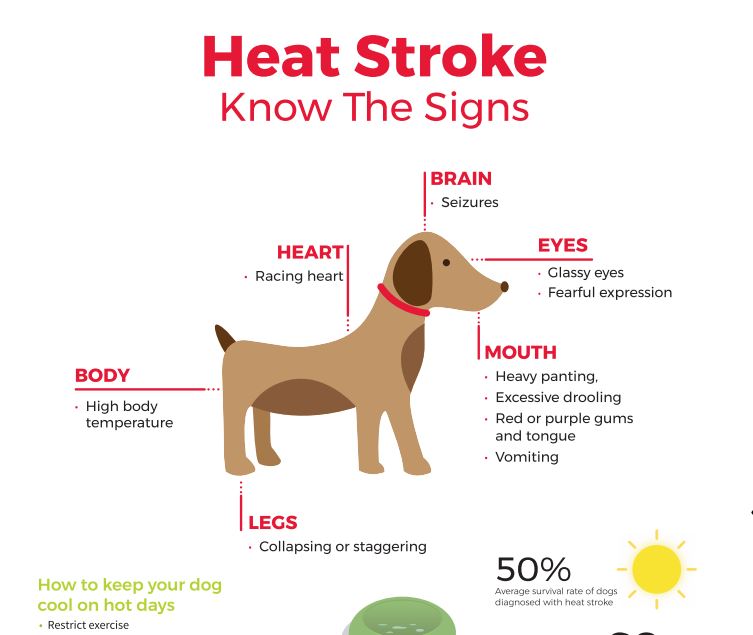Summertime is perfect for connecting with your pets. The long, sunny days are a great opportunity for long walks, mountain adventures, and strolls along the beach, all with Fido in toe.
Unfortunately, being overeager in hot temperatures can be hazardous for our furry friends because dogs are not well-suited to extreme heat. Overheating is very dangerous for pets, and in some cases, that long, mid-day walk can mean the difference between life and death. Because of this, it is crucial that all pet owners know how to recognize signs of heatstroke, how to treat overheating in pets, and what immediate actions can save a dog’s life.
Heatstroke normally happens when animals lose their ability to regulate body temperatures. As you may know, dogs do not sweat as humans do; rather, body temperatures I regulated by respiration, such as panting. If a dog’s respiratory tract cannot clear heat quickly enough, heatstroke becomes a very real threat. Common signs of heatstroke include hyperventilation, dry gums that become pale, excessive panting, increased salivation, a rapid pulse, confusion, diarrhea, weakness, vomiting, and possible rectal bleeding. Left untreated, these symptoms will grow worse and, eventually, lead to seizure or coma.
If you suspect your dog is suffering from heatstroke, bring them inside immediately. Use a rectal thermometer to take the animal’s temperature. A normal body temperature is at or around 101.5 degrees Fahrenheit, and moderate heating usually clocks in at between 103 to 104 degrees. Severe heating is anything beyond 104 degrees. If your dog’s temperature is in this danger zone, bring them to the veterinarian or the nearest emergency center immediately.
In the meantime, you can reduce your dog’s temperature by putting cool, wet towels on his neck, under his armpits, and between his hind legs. If you can, you should also wet his ear flaps and paw pads with cool water. Give your dog fresh, cool drinking water, and ensure he is comfortable for the ride to the doctor.
So, how do you prevent heatstroke in animals? As it turns out, it’s a fairly simple task.
- Provide plenty of fresh, cool water. Pets can get dehydrated quickly, and this is exacerbated when temperatures rise.
- Never leave your pet in a parked vehicle. Temperatures in an unairconditioned car can rise rapidly.
- Never shave your dog. The layers of a dog’s coat can protect them from overheating and sunburn and removing the coat will decrease the ability to regulate their body temperature.
- Don’t let your pet linger on hot asphalt. Keeps walks on grass or gravel whenever possible and limit all time on pavement. Hot sidewalks and roads can burn sensitive paw pads.
Additionally, animals with flat faces, like pugs and Persian cats, are more susceptible to heat stroke since they cannot pant as effectively. Similarly, older, overweight, and pets with heat and lung diseases should be kept in cool, air-conditioned rooms as much as possible.
If you’re traveling to a warmer part of the world, keep in mind that some airlines and airports put restrictions on pet travel when temperatures rise above 85 degrees Fahrenheit. This will usually apply to animals traveling as cargo. If you’re concerned about your upcoming trip, check our airlines guides for company-specific restrictions.
- Photo from Vets Now




